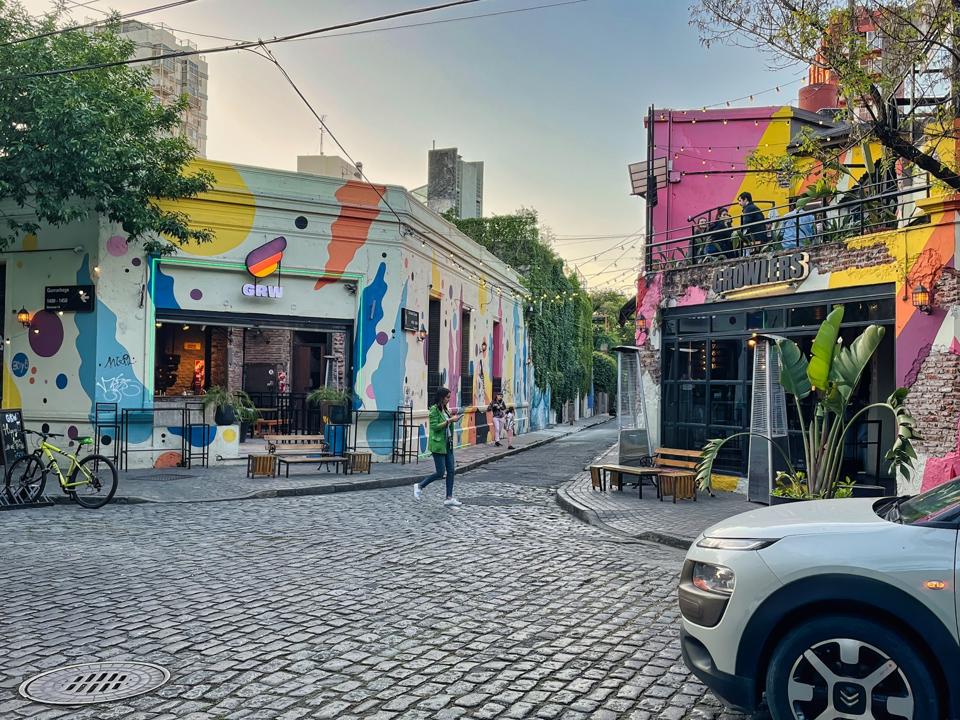Buenos Aires has long been one of my favorite cities. The stunning architecture, great meals and sultry tango make this city a divine place to visit throughout the year. It never really gets cold here, although the Argentines may think it does in the winter: which is our summer given that they are on the other side of the equator.
There are lots of great hotels and apartments for rent in a number of lively neighborhoods. I have loved spending time in the various Palermos, contiguous areas named for the film industry and other businesses.
However, probably my favorite place to stay is in Recoleta, home to the imposing cemetery where Eva Peron is buried. It is trendy, upscale, safe and walkable. It is also home to numerous restaurants open at all hours of the day.
One of the nicest places, with a great restaurant, that I have stayed there is the Loi Suites. It’s a business hotel that covers all the culinary bases with intense local beef and lighter fare like salmon. So, I recently sat down with executive chef Dario Galizia to find out more about how he caters to locals and guests. All responses have been edited and condensed for clarity.
Liza B. Zimmerman (L.B.Z.): How does your menu feature the classics of Argentine cuisine?
Darío Galizia (D.G.): By blending Argentine flavors with Mediterranean and international cuisine.
L.B.Z.: Which of the dishes show the most Spanish versus Italian influence?
D.G.: The pasta dishes are more focused on Italian cuisine, and the tapas and some of the chef’s suggestions are Spanish. Our cuisine clearly emphasizes Mediterranean cuisine, but we also offer Argentinean dishes.
The stuffed pastas that have become the most popular in our culture through Italian immigration are: ravioli, tortellini, agnolotti, malfatti, lasagna and cannelloni. With different types of fillings—spinach orchard, ricotta or mozzarella, different types of cheese, and meats—chicken, lamb, beef or fish—there are many varieties and styles, from more traditional to more gourmet.
As for sauces, we always start with the three mother sauces: tomato, bechamel or cream and demi-glace. These can be combined with other garnishes such as mushrooms, seafood, nuts, fresh herbs and meats.
Spanish dishes are most often found in chef’s suggestions or at special celebrations. They might include beef cheeks, grilled octopus with an omelet, seafood casserole or paellas, mushroom, shrimp, or veal croquettes.
L.B.Z.: What types of ingredients, preparations and dishes do you think of as classic in the lexicon of Argentine food?
D.G.: Meat is the most prominent product in Argentina: ribeye, sweetbreads and loin. Argentine cuisine is naturally characterized by the grill or the barbecue. There are many types of cuts and products cooked over charcoal.
Empanadas of all kinds are also an important part of the cuisine. However, there are many typical dishes that are influenced by the predominantly Italian and Spanish immigrants. Pasta, for example, is very traditional, especially stuffed pasta. There are also several types of stews and casseroles, that originate from Spain.
L.B.Z.: What types of sauces and spices are typical in the preparation and consumption of Argentine food?
D.G.: Oregano, ground chili, garlic, parsley, cumin, sweet or hot paprika, vinegar and sunflower oil are some of the ingredients you can find in a chimichurri.
If you want it to be spicy, add a few small chilies black pepper, Tabasco, or whatever you like. In any case, there are as many chimichurris as there are grilled meats in the world.
L.B.Z.: What makes Argentine beef so spectacular?
D.G.: The type of cattle breeds that were introduced from Europe adapted perfectly to our country, especially due to the type of our topography which features vast flatland with lots of food, which means that our cows do not have to walk too far to feed. This generates an almost perfect marbling between meat and fat and a soft muscle, which makes for tasty and tender meat.
L.B.Z.: How do your county’s wines pair with the food?
D.G.: There are some combinations that never fail, such as Cabernet Sauvignon with red meat, Sauvignon Blanc with fish or seafood or Malbec with pasta.

